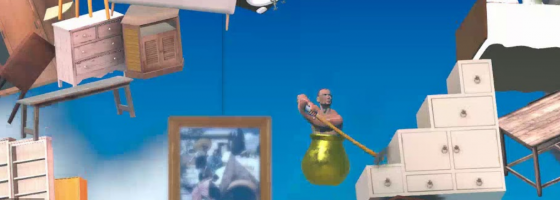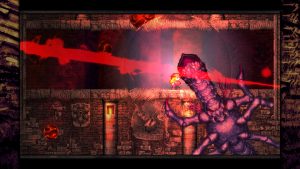Videogames are art, and arguably some of the most artistic developers out there are in the indie space. Indie developers can explore the medium in ways that the AAA developers aren’t able to do. With that said, there is one area that I continue to see indie designers fail to grasp — the balance of the artist and the business when it comes to game design and gameplay
The Artist Dilemma
In any industry built on passion, there’s always the difficulty when it comes to making art vs. making money. For the indie space, there are many games developed on the drive and passion of the developers alone. Hits like Stardew Valley, Return of the Obra Dinn, Undertale, and more, were not going to be made by anyone else.
When you see these games succeed in a market where they would have never been made by a AAA company, it’s driven more and more new and existing developers to the indie space to make their dream games. Many of these titles were built out of passion first, profitability third or fourth down the line.
And this is where the artist’s dilemma comes in with videogames — is it better to make the game you want to make, or do you want to make something that can earn a profit? Some of you reading this will argue that great games can be both, but that is a copout answer. When you look at forums and social groups of new developers, there is this mentality that the best games “don’t sell out,” and any aspects of marketing, playability, testing, are considered being a sellout to “the man.”
The games mentioned further up did have elements of playability and UI design put into them, and it’s often hard for people to see that behind the unique game systems. And that takes me to my second thoughts on Cultist Simulator.
The Cultist Conundrum:
Cultist Simulator was one of my favorite games of last year thanks to its unique take on adventure meets strategy design and the great lore. At launch, the game was missing noticeable game elements and systems to it along with QOL issues in terms of playability.
As of their last DLC, the game is wrapping up development for now with the developers moving on to their next game. Having not played it in a long time, I was hoping to find more improvements to problems and issues pointed out during the last year. Instead, I found that the game has been made harder and, in some ways, now worse than it was at the start.
The game’s mantra is that it’s up to the player to figure out its rules and systems, but in the same breath, there is no attempt to provide onboarding or education to the player as to how things work or when they go wrong. Case in point, in order to remove some of the overpowered strategies, one of the game’s three “jobs”: painting, was nerfed. Now when you paint, you can build up a stat called “staleness” that reduces the amount of money you earned.
Here’s the catch, there is no reference to this stat or mechanic in-game with the lore. The game will never tell you that there is a problem. Unless you are looking directly at it, you will not see where staleness comes in or have any idea how to fix it. This is a playability sin in my book and with development finished for now, it’s unknown at this point if there will be any more improvements to the game.
It’s important to point out that Cultist Simulator is not the only game guilty of this. I have strong words about the La-Mulana franchise and its insistence on ignoring playability in favor of leaving the game “as a mystery to be solved.” I’m sure all of you reading this right now can think of your own examples of games that full well knew about issues or complaints with its design that weren’t fixed in favor of keeping to the original vision.
Some will argue that this is the way of weeding out people who aren’t going to enjoy the game and that these are still fine games, but I have something to say about that.
What is Quality Game Design
When I think about some of my favorite games, they all have one thing in common despite being from different genres and developers — they start out great and get better from there. There’s this sentiment from developers of niche genres that a game should start out confusing or hard to play until the player “gets it,” and from there the game becomes enjoyable. In many cases, these games don’t even have adequate tutorials and rely on the fanbase to make guides for new players.
Many of my favorite games this decade didn’t start out confusing or hard to play, but I enjoyed them from the first minute of loading them up. In the last few years with titles like Hellsign, Forager, Slay the Spire, Dead Cells, and more, I could see the greatness in them within the first half hour of playing them.
Even skill-intensive games such as Kaizo titles aren’t built to be frustrating in the sense of bad controls or a confusing UI. If a player is stuck at a game, then it should be because of them, not due to poor game systems and design. A popular term used in the Kaizo community is “jank” to describe something that is difficult due to the design of the game and not the skill level of the player.
The smoking gun for other games is that the parts that are confusing or hard to follow are issues with the QOL elements or UI of a game. Simple fixes and updates can go a long way to making a title better, and many designers willingly ignore them or don’t see that.
A great example of changing a game for the better happened with the title Brigador. When Brigador was first released, the game featured a tank-like control scheme that was insisted by the developer to be the best way to play the game. Following reviews and criticisms about this, the game was relaunched as “Brigador Uparmored Edition” along with the option to have a twin-stick-style control scheme.
Being able to parse feedback is an essential aspect of growing as a game developer. Ignoring all criticism is just as bad as only listening to praise.
We’ve talked many times about the line between complexity and difficulty, and the best games should be easy to learn. Getting a game to that point requires looking at a title beyond just your vision for it.
The Business of Art
While videogames are an artform, they are still a product. At the end of the day if you’re not able to make something people want to play, then you’re not going to be able to call yourself a professional game designer.
In my opinion, what separates hobbyists from game designers is being able to think about a game beyond just your dream vision of it, and understand what it takes to make something that people can understand and enjoy.
One of my contacts said this about the game industry and making videogames: “There is as much business in the art as there is art in the business.” These days, it takes a lot for your game to stand out, and making a great game is also about making a great product.
There are developers out there who don’t want to hear about the importance of the business side and that’s unfortunate. Some developers have put themselves into this mentality of striving to make a living in the game industry, but in the same breath, choose to ignore the business aspects.
I said this in another post of mine, but people who only see a game succeeding because it received a lot of press coverage, streamers played it, etc., are missing half the equation. A successful game didn’t succeed because it got all that attention, the attention is just the byproduct of the game succeeding in the first place.
Making a Living:
At the end of the day, making game development your career is about earning enough money to keep going. It’s very easy for first-time developers to think that money doesn’t matter, but it’s often that the worst games released come from people who hold too firmly to their vision.
With that said, it’s also important to point out that you still need said vision as your guide for designing your game. Be too quick to change your title, and you’ll be left with a game without a purpose or defining trait. If you only view your game as either art or product, you’re not going to end up with a title that people want to play, and it takes a combination of the two in order to succeed.




